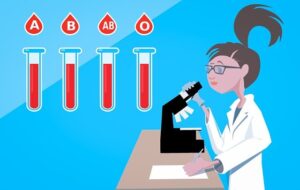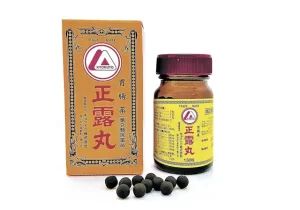Scientists Warn of Hidden Health Risks in Sushi and Sashimi
- Gut Bacteria Enzymes Offer Hope for ABO Universal Blood Transfusions
- Well-Known Japanese Medicine Exposed for 30 Years of Data Falsification
- Oregon Reverses Course: From Decriminalization to Recriminalization of Drug Possession
- Why Lecanemab’s Adoption Faces an Uphill Battle in US?
- Yogurt and High LDL Cholesterol: Can You Still Enjoy It?
- WHO Releases Global Influenza Vaccine Market Study in 2024
Scientists Warn of Hidden Health Risks in Sushi
- Was COVID virus leaked from the Chinese WIV lab?
- HIV Cure Research: New Study Links Viral DNA Levels to Spontaneous Control
- FDA has mandated a top-level black box warning for all marketed CAR-T therapies
- Can people with high blood pressure eat peanuts?
- What is the difference between dopamine and dobutamine?
- How long can the patient live after heart stent surgery?
Scientists Warn of Hidden Health Risks in Sushi and Sashimi.
Sushi, Sashimi and other raw seafood dishes are growing in popularity worldwide. While generally safe, insufficiently processed seafood, particularly bacteria like Vibrio, can pose health risks and even contribute to the spread of antibiotic-resistant bacteria.
In many places around the world, including Norway, sushi has become a staple in people’s daily diets. Many indulge in the delight of sashimi and other raw fish options.
However, it is important to emphasize that, in general, consuming such foods in Norway is considered safe. Nevertheless, despite its delectable appeal, sushi can have detrimental effects on individuals and society’s health.

“Raw fish, sashimi, and lightly smoked fish harbor potential health risks due to the presence of bacteria, especially for immunocompromised individuals, children, and the elderly,” said Dr. Hyejeong Lee.
She recently earned her doctoral degree in biotechnology and food science from the Norwegian University of Science and Technology (NTNU).
In her research, she examined various strains of Vibrio bacteria in minimally processed seafood products. The risk of bacterial contamination significantly increases when these products are not subjected to heat treatment or other antibacterial measures.
“Our goal is to gain more knowledge about Vibrio bacteria in these seafood products, including their roles in spoilage and pathogenicity. Additionally, we want to understand if raw seafood can potentially transmit antibiotic-resistant bacteria,” Dr. Lee explained.
While Listeria is perhaps the most well-known pathogenic bacterium associated with raw or lightly processed seafood, Vibrio bacteria have also concerned scientists for some time.
Norwegian research highlights the potential health risks of insufficiently processed seafood products, including the transmission of antibiotic resistance. Dr. Lee’s focus was on the prevalent fish products in the Norwegian market. She examined the presence of Vibrio bacteria in these products and found that mild processing did not necessarily inhibit bacterial growth. In other words, the processing of sushi, sashimi, and lightly smoked fish does not effectively prevent bacterial proliferation. But that’s not all.
“These variants of Vibrio bacteria are mostly potential pathogens, often associated with several different risk factors. Indeed, the risk of infection with Vibrio bacteria is very low, especially for healthy individuals. However, Vibrio bacteria are often overlooked when we discuss food safety. I believe my research underscores the need for greater attention to these bacteria in the food industry,” Dr. Lee said.
To ensure the safety of consuming raw or lightly processed seafood, it is crucial to do so when the products are at their freshest. Maintaining strict personal and kitchen hygiene during food preparation is essential.
While falling ill is certainly undesirable, another factor is of even greater importance on a global scale.
Bacteria in the ocean frequently exchange genetic material with other bacteria. If this genetic material comes from antibiotic-resistant bacteria, the consequences are particularly unfortunate.
Certain strains of Vibrio bacteria can also transfer antibiotic resistance from one bacterium to another. Consuming seafood infected with antibiotic-resistant bacteria is a potential route for these bacteria to spread from marine animals and the environment to humans.
Antibiotic-resistant bacteria represent a growing global concern. While resistant bacteria may not cause more diseases than other bacteria, they are harder to treat because not all types of antibiotics are effective against them. In the worst-case scenario, no antibiotics work.
“Controlling the spread of antibiotic-resistant bacteria requires a comprehensive approach that integrates animal and human health, food production, and the environment for improved public health. Microbes are transmitted between animals and humans through food and the environment, so reducing antibiotic use alone is insufficient to prevent bacterial spread,” noted Dr. Anita Nordeng Jakobsen, Associate Professor in the Department of Biotechnology and Food Science at the Norwegian University of Science and Technology.
Strict regulatory oversight is perhaps the most crucial means of addressing the issue of antibiotic-resistant bacteria. However, individuals can also contribute to change by choosing seafood products from countries like Norway, which minimize antibiotic use in aquaculture.
Norway is among the world’s leading nations in restricting antibiotic use in aquaculture and livestock farming. However, in other parts of the world, especially Southeast Asia, the prophylactic or growth-promoting use of antibiotics remains common.
Nearly 300 People Food Poisoning in Japanese 130-Year-Old Restaurant
China Suspended All Imports of Japanese Seafood from Aug 24
Scientists Warn of Hidden Health Risks in Sushi and Sashimi
(source:internet, reference only)
Disclaimer of medicaltrend.org
Important Note: The information provided is for informational purposes only and should not be considered as medical advice.



